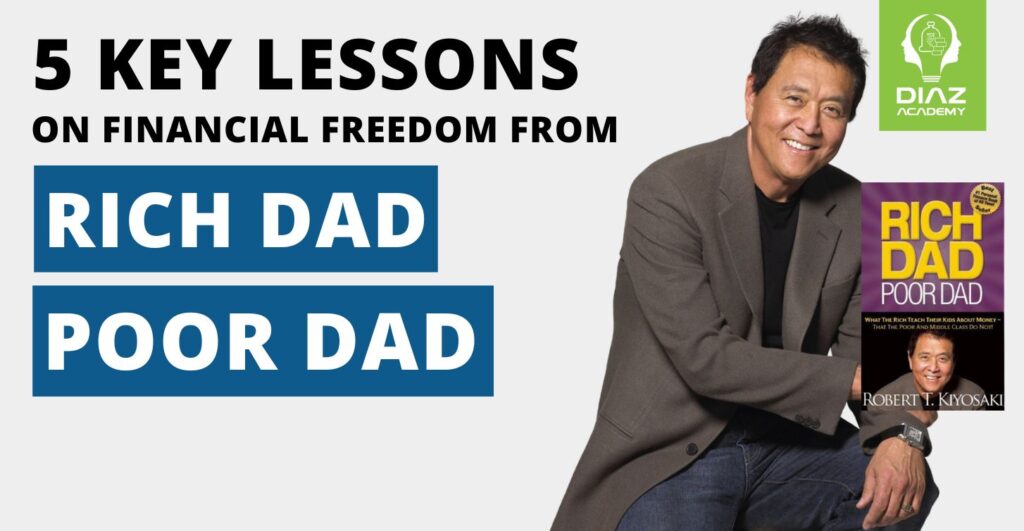“Rich Dad, Poor Dad” by Robert Kiyosaki is a classic book on personal finance that has inspired countless people to take control of their finances and work towards financial independence. In this book, Kiyosaki shares the lessons he learned from two father figures in his life – his biological father (the “poor dad”) and his best friend’s father (the “rich dad”). Through these two contrasting perspectives, Kiyosaki provides readers with valuable insights on how to build wealth and achieve financial freedom
Here are some of the key financial lessons from “Rich Dad, Poor Dad”:
1.Mindset shift: One of the most important lessons from the book is the need for a mindset shift. Kiyosaki encourages readers to move away from the traditional approach of working hard to earn money and instead focus on making their money work for them. This means embracing an entrepreneurial spirit, investing in assets that generate passive income, and taking calculated risks.
2.Financial education is key: Kiyosaki stresses the importance of financial education and the need to understand the difference between assets and liabilities. Assets put money in your pocket, while liabilities take money out. Understanding this distinction is critical to building wealth and achieving financial freedom.
3.Take calculated risks: In order to build wealth, Kiyosaki argues that one must be willing to take calculated risks. This means stepping outside of your comfort zone and investing in things that may not have an immediate return, but have the potential for long-term growth and income.
4.Diversification is important: Kiyosaki advocates for diversifying your investments across multiple assets, including real estate, stocks, and business ventures. This reduces the risk of loss in any one area and helps ensure a steady stream of passive income.
5.Passive income is crucial: One of the main themes in the book is the importance of building a stream of passive income. Kiyosaki emphasizes the need to invest in assets that generate income without requiring a lot of time and effort, so that you can achieve financial freedom and live life on your own terms.
In conclusion, “Rich Dad, Poor Dad” is a must-read for anyone looking to improve their financial situation. Whether you’re just starting out or well into your career, the lessons from this book can help you build wealth and achieve financial freedom. By shifting your mindset, investing in assets, and taking calculated risks, you can work towards a brighter financial future.

